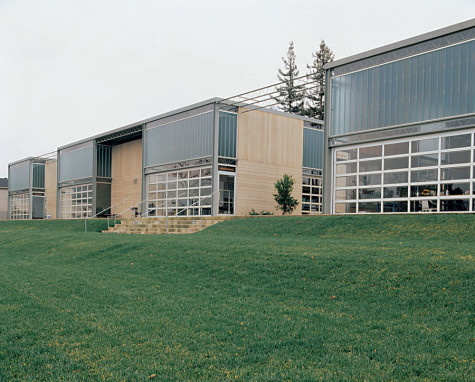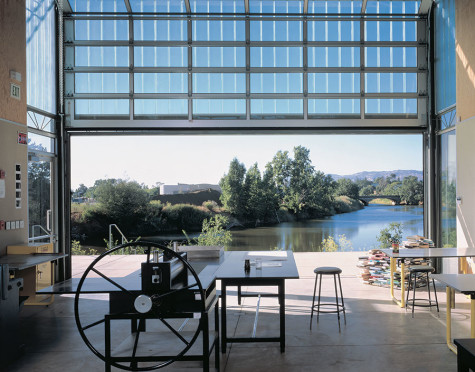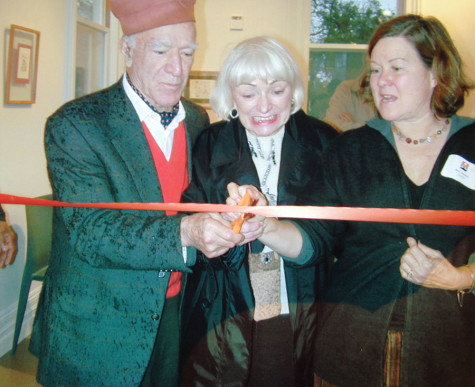The brain behind The Oxbow School tells all
Imagine a school where you can make art to your heart’s content, do your homework by a river, grow your own food, and have your creativity valued as much as your academic skills. Welcome to The Oxbow School.

The front of the contemporary teaching studios/classrooms.
In 1997, Ann Hatch, along with leading California vineyard operators Robert and Margrit Mondavi, founded The Oxbow School: an independent, semester-long high school for the arts located in Napa, CA. The school provides students a chance to spend a semester studying and producing art, alongside regular academics, in an innovative culture of young, creative minds and experienced, passionate teachers. In this interview, Ann Hatch explains what the Oxbow School is all about and provides insight into the lives of Oxbow students.
How did you come up with the idea of The Oxbow School?
We don’t need any more art galleries, any more museums, or any more after school programs. What we do need are the arts integrated with young people, the people that will go to the museums and the galleries.
When I go to museums, I see mostly people my age. I’m going to be 70 soon, so it’s not exactly a hip young crowd. I thought, ‘where are all the young people?’ … We need to start developing awareness for high school students. So I thought, ‘Why don’t I start a small semester-based school in partnership with Robert Mondavi?
Have you struggled at all in the process of creating and maintaining Oxbow?
Filling the school twice a year is hard. If all the schools were like Urban, we would be set, but Urban is a unique place. It gets what were doing, and it’s not threatened by it. But some schools don’t want their students to leave because they lose the tuition. So we actually find ourselves with a shortage of students sometimes.
Is there a common thread in the type of people Oxbow wishes to attract? What’s your ideal Oxbow student?
It’s a student that is open to learning more about themselves. They get a real in depth experience at Oxbow. The arts are really emphasized, so if you want to spend time in the studio, you can get some interesting things done and people are there to help you.

The view of the Napa River from one of Oxbow’s state-of-the-art studios.
If you take advantage of what’s being offered, you can achieve something substantial for whatever you want to do, whether you want to become an artist or a mechanic. The community and its dynamics are huge parts of the school as well. Everybody is residential, creating a bond, and the fact that everybody is interested in the arts creates an equalizer. So there are no cool kids, not-cool kids, sports kids, or art kids, everybody is just interested in the arts.
What is your favorite memory of a student breakthrough that you have witnessed?
There was one very bright student, and she had this beautiful painting on the wall, which had geometric and figurative (shapes). She said, ‘I’m studying painting but I’m interested in architecture and neuron biology, so I decided to do a painting on the architecture of the brain.’ And I just went, ‘Oh my god.’
The painting was so perfect for the architecture of the brain, and the way she spoke about it, how she combined these two rather disparate interests into a painting, I just thought, ‘This is what its all about.’ Just finding those kids.
(All the final projects) are personalized in some way. Sometimes it’s quite raw, sometimes its just plain sad, and sometimes it’s being 16 and all of the issues that go along with that.

Robert (left) and Margrit Mondav (center) with Ann Hatch (right) at the ribbon cutting for the renovations of Oxbow’s dining hall on Dec. 14, 2002.

